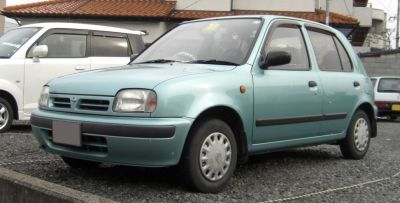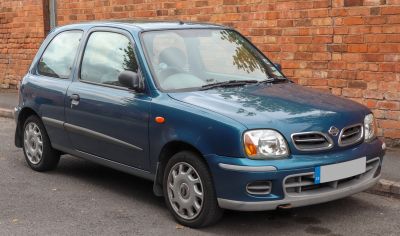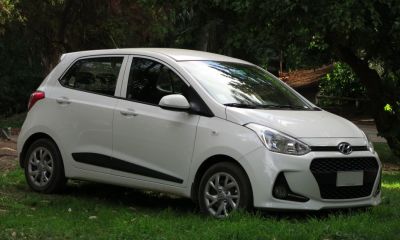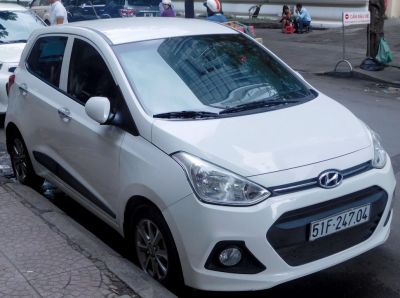 1998 Daihatsu Sirion (M1) Dimensions, Size & Specs
1998 Daihatsu Sirion (M1) Dimensions, Size & SpecsMeasurements of the 1998 Daihatsu Sirion, engineered for optimal performance and comfort
| Dimensions | |
|---|---|
| Length: | 3675 mm144.7 in12.1 ft |
| Width: | 1595 mm62.8 in5.2 ft |
| Height: | 1450 mm57.1 in4.8 ft |
| Trunk Capacity: | 37-235 liter1.3-8.3 cu ft |
| Trunk Capacity (Max): | 527-550 liter18.6-19.4 cu ft |
| Weight Specifications | |
| Curb Weight: | 810-890 kg1786-1962 lbs |
| Maximal permitted Weight: | 1320-1400 kg2910-3086 lbs |
| Tire Specifications | |
| Rims Sizes: | Other Rims:
|
| Tire Sizes: |
|
The Daihatsu Sirion (M1) marks the first generation of this compact hatchback, produced between 1998 and 2005. It is designed as an urban-friendly vehicle, ideal for drivers seeking efficiency combined with practical interior space. Measuring 3,675 mm (144.7 inches) in length, it offers a manageable footprint for city driving and parking. The width ranges narrowly between 1,590 mm and 1,595 mm (62.6 to 62.8 inches), providing a stable stance without sacrificing maneuverability. Standing at 1,450 mm (57.1 inches) tall, the Sirion features a well-proportioned cabin height that maximizes interior comfort for passengers.
Weighing between 810 kg and 890 kg (1,786 to 1,963 lbs) in curb weight, the Daihatsu Sirion remains light and nimble. Its maximum allowable weight ranges from 1,320 kg to 1,400 kg (2,910 to 3,086 lbs), indicating a considerable payload capacity relative to its size. The luggage compartment is versatile despite the compact format, offering 37 to 235 liters (1.3 to 8.3 cubic feet) of cargo space with rear seats upright. Folding the rear seats expands the storage volume significantly to between 527 and 550 liters (18.6 to 19.4 cubic feet), making it suitable for carrying larger items or greater loads.
The original Sirion rides on wheels sized 14 inches or 13 inches with bolt pattern 4x100 mm, combined with tires measuring 165/65 R14 or 145/80 R13. These tire and rim sizes complement the car’s focus on economy and city-friendly handling. Overall, the Daihatsu Sirion (M1) delivers a compact yet practical package, balancing small car agility with flexible interior space, ideal for urban drivers or those requiring a reliable hatchback from the late 1990s to mid-2000s.
Discover the standout features that make the 1998 Daihatsu Sirion a leader in its class
Have a question? Please check our knowledgebase first.
The Daihatsu Sirion (M1) hatchback produced from 1998 to 2005 measures approximately 3675 mm (144.7 inches) in length, 1590 to 1595 mm (62.6 to 62.8 inches) in width, and 1450 mm (57.1 inches) in height. These compact dimensions make it a practical city car, providing easy maneuverability in urban environments while still offering adequate interior space for passengers and cargo.
The Daihatsu Sirion (M1) has a curb weight ranging from 810 kg to 890 kg (approximately 1786 to 1962 pounds), depending on the variant and equipment level. Its maximum permissible weight varies between 1320 kg and 1400 kg (2910 to 3086 pounds), allowing for a reasonable payload capacity that includes passengers, luggage, and additional cargo.
With the rear seats in the upright position, the Daihatsu Sirion offers between 37 liters (1.3 cubic feet) and 235 liters (8.3 cubic feet) of luggage capacity, which suits small items and light shopping trips. When the rear seats are folded down, the luggage capacity expands significantly to between 527 liters (18.6 cubic feet) and 550 liters (19.4 cubic feet), providing ample space for larger loads or occasional bulky cargo.
The Daihatsu Sirion (M1) is typically equipped with rims sized at 4x100x54 in 13 to 14-inch diameters, paired with tires sized 165/65 R14 or 145/80 R13. These sizes are common for compact hatchbacks, balancing ride comfort, handling, and cost-effectiveness, while also offering sufficient grip and adequate performance for everyday driving.
The Daihatsu Sirion (M1), with its compact dimensions—3675 mm long, around 1590 mm wide, and 1450 mm tall—fits comfortably inside a standard residential garage. Most single-car garages are approximately 6 meters (19.7 feet) long and 3 meters (9.8 feet) wide, so the Sirion allows ample clearance for easy parking, door opening, and walking around the vehicle.
The Daihatsu Sirion (M1) is essentially the first generation of the Sirion model starting in 1998, so it does not have a direct predecessor called Sirion. However, if compared to earlier Daihatsu compact cars like the Charade or Storia, the Sirion generally offers a slightly more modern and optimized compact hatchback size with a focus on maximizing interior volume within a similarly compact footprint.
When compared to similar hatchbacks of its era, such as the Suzuki Swift, Honda Logo, or Toyota Yaris, the Daihatsu Sirion (M1) offers comparable length and Width, typically around 3.6 to 3.7 meters long and 1.58 to 1.6 meters wide. Its luggage capacity with rear seats folded—up to approximately 550 liters—is competitive, often providing slightly more cargo space than some rivals in the B-segment hatchback category.
The Daihatsu Sirion (M1) measures about 1450 mm (57.1 inches) in height. Although specific ground clearance figures are not provided here, typically this height alongside its compact design affords good visibility and a comfortable seating position for city driving. The reasonably low height also helps with stability and handling, making it well-suited for urban and suburban driving conditions.
Yes, the Daihatsu Sirion (M1) dimensions show a minor variation in width, ranging from 1590 mm to 1595 mm (62.6 to 62.8 inches), depending on trim or specific market versions. This very slight difference has a negligible impact on parking ease or interior space, but it reflects how small cosmetic and feature updates can alter dimensions marginally within a model's production run.
The Daihatsu Sirion (M1) commonly uses 13 and 14-inch rims with bolt patterns of 4x100x54, paired with tires measuring 165/65 R14 or 145/80 R13. These tire and rim sizes emphasize balance between fuel efficiency, ride comfort, and the agile handling expected from a subcompact hatchback, making the Sirion practical for urban use while maintaining responsive driving dynamics.
Discover similar sized cars.

| Production: | 1992-2002 |
|---|---|
| Model Year: | 1992 |
| Length: | 3695-3746 mm145.5-147.5 in |
| Width: | 1585-1595 mm62.4-62.8 in |
| Height: | 1430-1440 mm56.3-56.7 in |

| Model Year: | 1992 |
|---|---|
| Length: | 3695-3746 mm145.5-147.5 in |
| Width: | 1585-1595 mm62.4-62.8 in |
| Height: | 1430-1440 mm56.3-56.7 in |

| Production: | 2023-present |
|---|---|
| Model Year: | 2023 |
| Length: | 3760 mm148.0 in |
| Width: | 1665 mm65.6 in |
| Height: | 1505 mm59.3 in |

| Production: | 2017-2019 |
|---|---|
| Model Year: | 2017 |
| Length: | 3765 mm148.2 in |
| Width: | 1660 mm65.4 in |
| Height: | 1520 mm59.8 in |

| Production: | 2013-2017 |
|---|---|
| Model Year: | 2013 |
| Length: | 3765 mm148.2 in |
| Width: | 1660 mm65.4 in |
| Height: | 1520 mm59.8 in |
